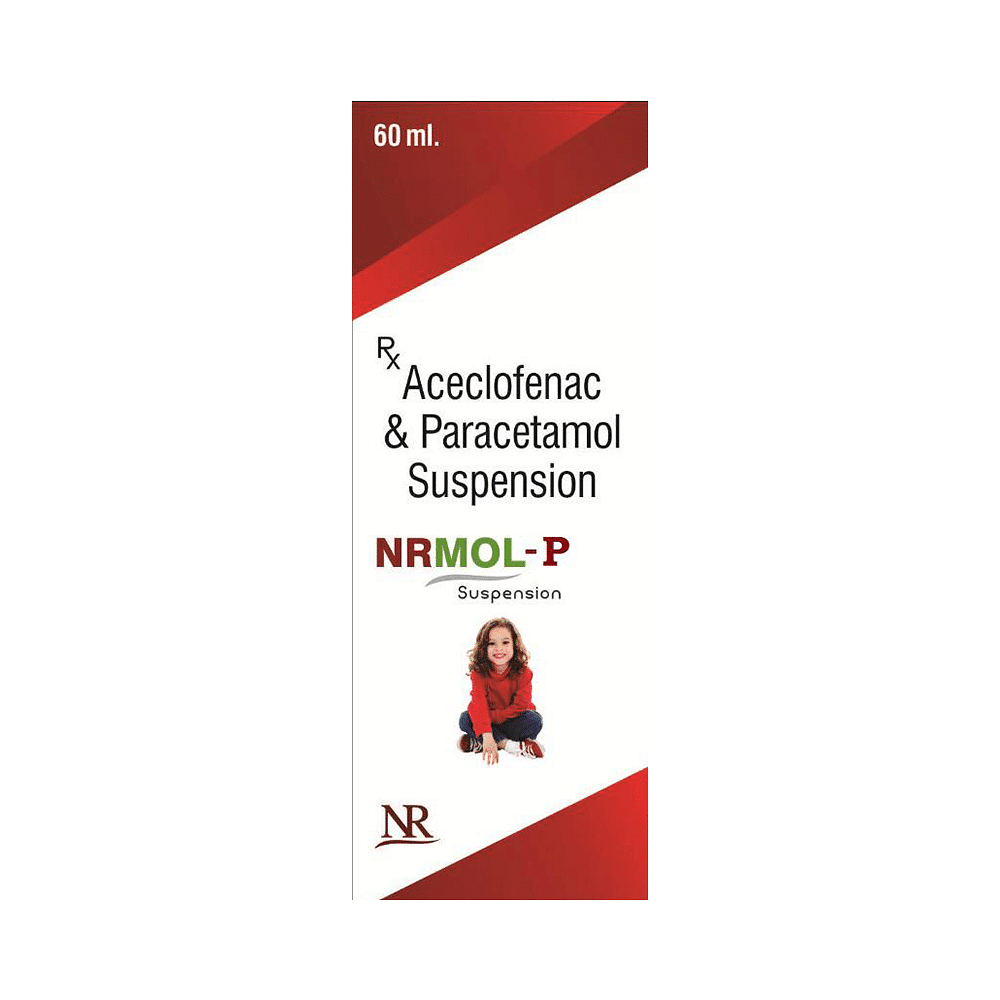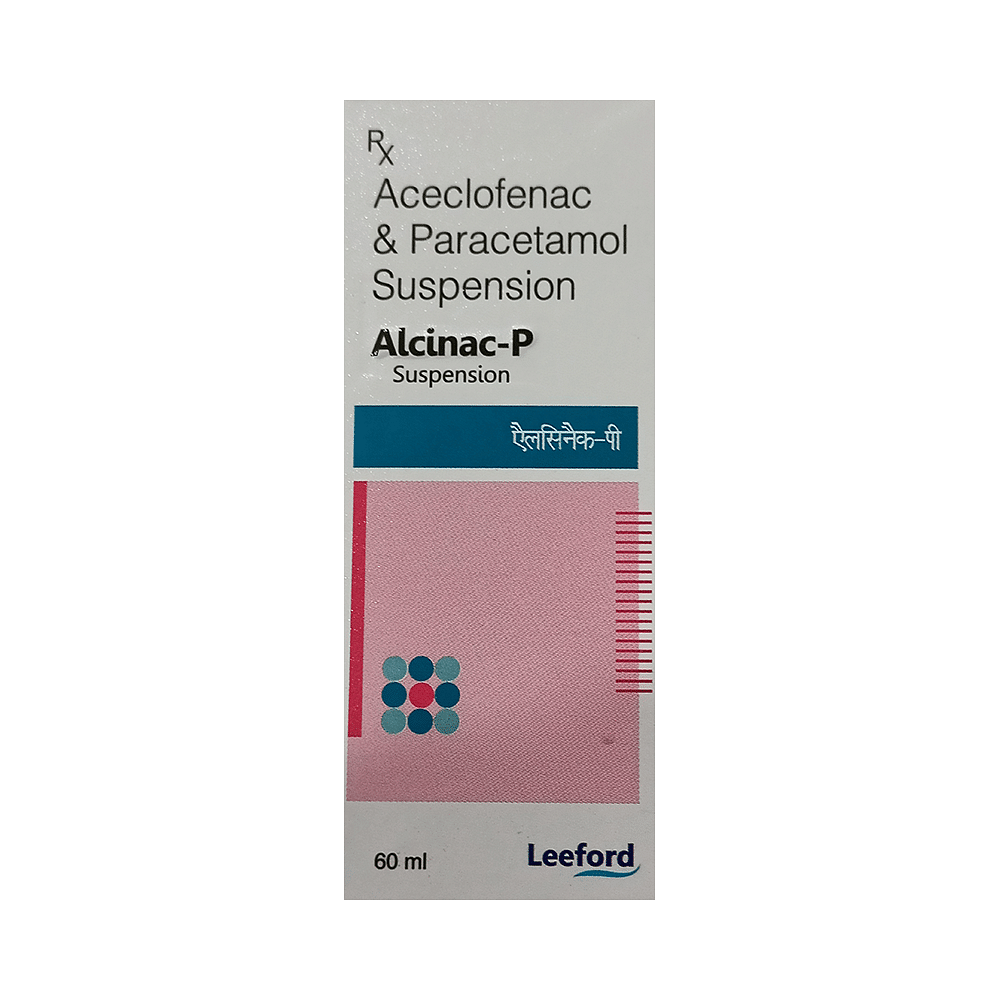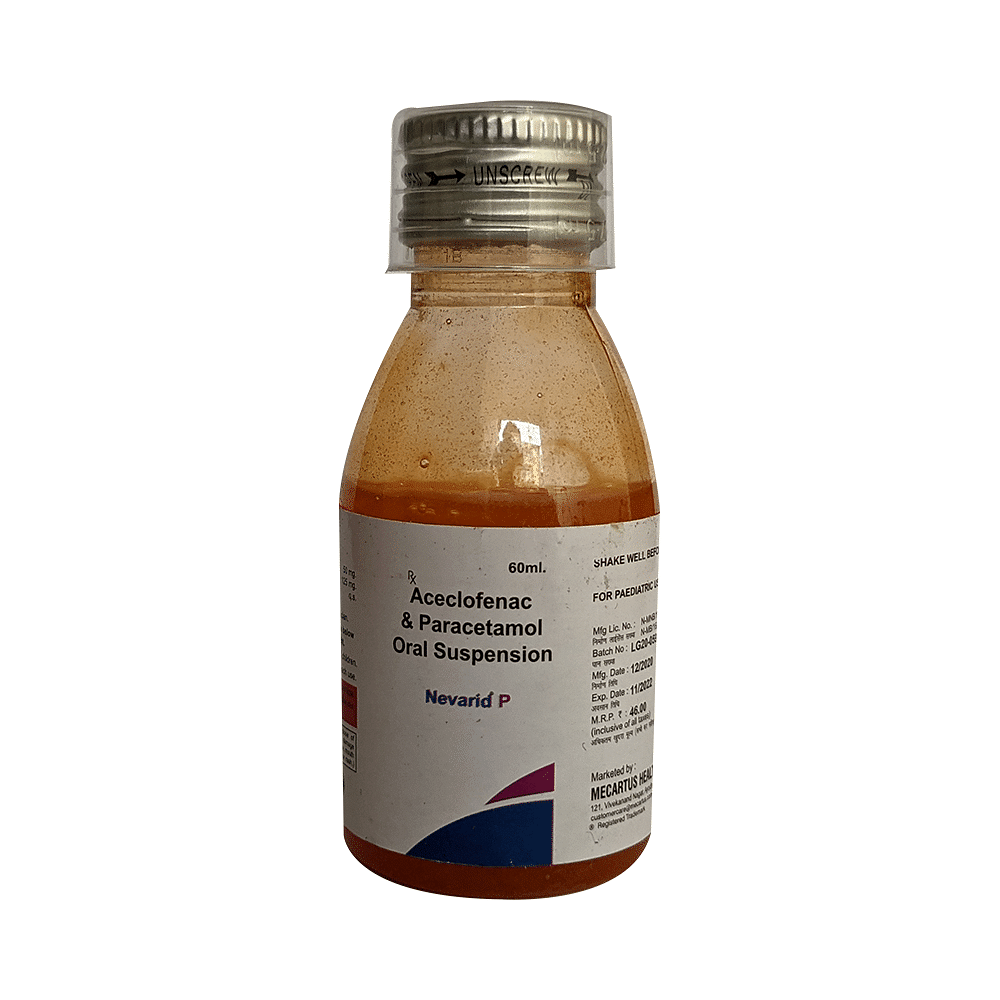
Axcept-P Oral Suspension
Manufacturer
Zenexa Healthcare
Salt Composition
Aceclofenac (50mg) + Paracetamol (125mg)
Key Information
Short Description
Axcept-P Oral Suspension helps lower body temperature (fever) and reduce pain and inflammation (redness and swelling) both in infants and children.
Dosage Form
Oral Suspension
Introduction
Axcept-P Oral Suspension is a medication used to help lower body temperature (fever) and reduce pain and inflammation (redness and swelling) in infants and children. It is available in an oral suspension form and is typically given after food to avoid abdominal discomfort. It is important to follow the recommended dosage and to consult with a doctor if you have any concerns or if your child does not show improvement.
Directions for Use
Give this medicine after food to avoid abdominal discomfort in your child. Maintain a log of your child's temperature. If you do not see any improvement, contact your child's doctor for advice. Keep a track of the dose and the frequency in which you have given this medicine to your child. This will help prevent overdosing.
How it works
Axcept-P Oral Suspension comprises two active ingredients: Aceclofenac and Paracetamol. These medicines work by blocking the action of chemical messengers responsible for pain, fever, and inflammation (redness and swelling).
Quick Tips
Give plenty of fluids to your child to ensure proper body hydration (water-levels) Give your child a balanced diet Encourage your child to have optimum sleep since sick children get tired soon and getting plenty of rest helps them recover faster. Stop the medicine and consult your child's doctor in case your child exhibits allergic rash or stomach pain soon after taking this medicine.
Related Medicines

Ara P Oral Suspension

Jynac P Oral Suspension

Aceflam P 50mg/125mg Oral Suspension

Nrmol-P Oral Suspension

Alcinac-P Oral Suspension

Zeonac Plus Oral Suspension

Nevarid P Oral Suspension

Acelopara Oral Suspension

Aceflec Oral Suspension

Luzipain P Oral Suspension
Frequently asked questions
Can the dose of Axcept-P Oral Suspension be adjusted by yourself without consulting a doctor?
No, it is not recommended to alter the dose of this medicine without consulting a healthcare provider. Increasing the dose may lead to toxicity, while decreasing it may cause symptoms to recur. For best results, consult your child's doctor if you feel a change in dose may be needed.
How much Axcept-P Oral Suspension should be given to my child?
Your child's doctor will prescribe the appropriate dose based on their condition and body weight. It is essential to stick to the prescribed dosing schedule to ensure safe and complete recovery.
How should Axcept-P Oral Suspension be stored?
This medicine should be stored at room temperature, in a dry place, away from direct heat and light. Additionally, keep all medicines out of reach and sight of children to avoid accidental intake.
Can the same dose of Axcept-P Oral Suspension be given to all children?
No, this medicine cannot be given to everyone in the same dose. The doctor will determine the appropriate dose based on your child's age and body weight, which may change as they grow older. Always consult a doctor before giving any dose of this medicine.
When can my child expect to feel better?
The duration of treatment with Axcept-P Oral Suspension depends on the severity of the infection. Give the medicine in the prescribed dose and frequency for a few days to weeks, as advised by your child's doctor. If symptoms persist after completing the full course, consult the doctor promptly.
Are there any serious side effects associated with this medicine?
Although generally well-tolerated, if you notice persistent vomiting, body swelling, decreased urine frequency, or a severe allergic reaction in your child, seek medical attention immediately.
Are there specific contraindications for the use of Axcept-P Oral Suspension?
This medicine should be avoided in patients with known allergies to its components or excipients, other painkillers (NSAIDs), stomach ulcers, heart failure, high blood pressure, liver disease, and kidney disease.


